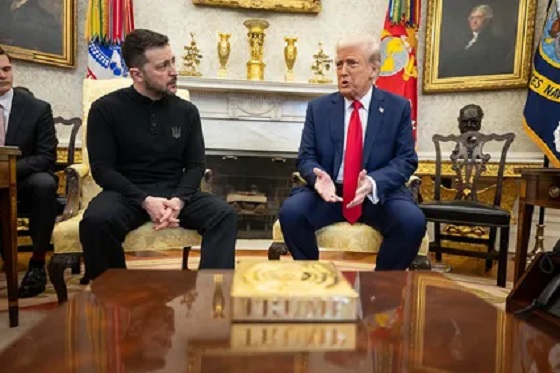2025 Federal Election
Real Homes vs. Modular Shoeboxes: The Housing Battle Between Poilievre and Carney
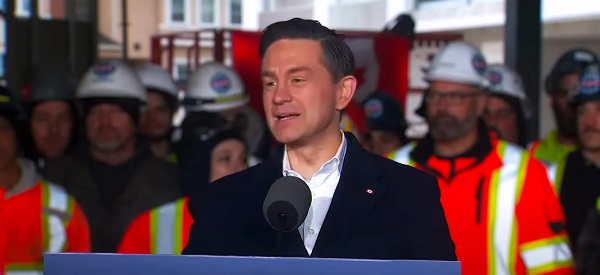

 Dan Knight
Dan Knight
Mark Carney’s housing plan is more state control and modular misery.
It’s not every day a Canadian politician offers a clear, structured plan to fix something in this country. But that’s what happened in Scarborough on April 21, when Conservative Leader Pierre Poilievre stepped to the mic and laid out his vision for tackling Canada’s worsening housing crisis—and, more broadly, for dismantling the economic scaffolding the Liberals have spent the last decade building.
Now, to be clear: this wasn’t a moment of messianic deliverance. It was a campaign speech. Poilievre is a politician. He’s trying to win. But the contrast he drew—between a country spiraling into economic stagnation under Trudeau-era policy and one potentially emerging from it—is the real story here. And for the first time in a long time, the Liberals should be worried. Because they’re being outflanked not with bluster, but with structure.
A Decade of Decay
Poilievre opened with what he called the “lost Liberal decade”—ten years of growing inflation, collapsing affordability, increased crime, and institutional arrogance. And he’s not wrong. The cost of living in Canada has exploded. Homeownership—once the cornerstone of middle-class life—has become a distant fantasy for an entire generation. Violent crime is up. Street disorder is normalized. The country is, in practical terms, unrecognizable from what it was even five years ago.
And while Justin Trudeau has technically exited stage left, his policies remain. His advisors remain. And his economic worldview remains—in the person of Mark Carney, the unelected banker now fronting the Liberal Party’s future.
Poilievre made a point of naming him directly: Mark Carney, Trudeau’s economic consigliere, now trying to take the wheel after years behind the curtain. And with him comes a Liberal platform that, incredibly, proposes **$130 billion in new spending—more than Trudeau’s own budget—**without any clarity on how to pay for it, beyond $28 billion in undefined “cuts.”
In Poilievre’s framing, this is not a reset. It’s a continuation. Same agenda. Same inflationary pressure. Same bureaucratic paralysis. And for a country already on the edge, that’s not a choice—it’s a warning.
A Hard Policy Pivot
So what did Poilievre propose?
First, he named a number: 2.3 million new homes built over five years. That alone sets him apart from most of the field, who are still dealing in abstractions and talking points. He detailed how to get there: axe the GST on new housing, penalize municipalities that block construction, unlock 15% of federal land for homebuilding, and—here’s where it gets controversial for polite Ottawa society—cap immigration so the number of newcomers doesn’t outpace the number of homes being built.
Let that sink in.
He said it plainly: you cannot invite more people into the country than you have homes to shelter them. It’s not xenophobic. It’s math. It’s called infrastructure planning, and for some reason, it’s been taboo in federal politics for years. But ask any Canadian renter stuck in a bidding war over a 600-square-foot shoebox if supply and demand matter. They’ll tell you the truth politicians won’t.
Now, some of this is ambitious—perhaps even too ambitious. The housing market is not a light switch. But at least it’s a plan built on reality. The math isn’t ideological. If demand grows faster than supply, prices rise. Period. It’s not controversial unless you live in Ottawa.
Now, some of this is ambitious—perhaps even too ambitious. The housing market is not a light switch. But at least it’s a plan built on reality. The math isn’t ideological. If demand grows faster than supply, prices rise. Period. It’s not controversial unless you live in Ottawa.
Beyond housing, Poilievre’s broader agenda was clear: unleash the resource economy.
He pledged to repeal Bill C-69, kill the emissions cap, approve projects like LNG Canada and LNG Quebec in six months, and end the tanker ban off B.C.’s coast. This, he said, would unlock $500 billion in economic growth over five years. That number might be aggressive, but again—it’s grounded in something Canada used to be good at: developing natural resources.
Carney’s plan, in contrast, leans into centralization, green transition subsidies, and modular housing units dropped on federal land—bureaucracy dressed as boldness.
Law and Order, and the Limits of Civility
Poilievre also spoke plainly about crime. He promised to “lock up criminals and secure the border.” Predictably, the media has called this coded language or dog-whistling. But Canadians living in cities like Toronto or Vancouver don’t need code. They need safety. You can debate tone all you want—but no one debates the crime stats.
On spending, Poilievre said he’d eliminate $10 billion in consultant costs, kill the gun buyback scheme, cut Trudeau’s failed drug programs, and cap government expansion. He promised no cuts to transfers for health or seniors, and pointedly noted that Carney’s vague savings plan relies on the same recycled Trudeau logic: say one thing, do another.
And then there was unity—an issue every federal leader pays lip service to, but few address seriously.
Poilievre’s angle was different. He said national unity isn’t built with slogans—it’s built with shared prosperity. Let Alberta build. Let Quebec profit. Let provinces manage their resources without Ottawa’s suffocating oversight. In a country this large, that’s not radical—it’s overdue.
The Liberal Modular 500k Housing Vision
And then there’s Mark Carney’s housing plan—because of course, the guy who spent the last decade cashing checks in London and New York now thinks he’s going to fix Canada’s housing crisis… with modular homes.
That’s right. Not by fixing the zoning nightmare, or the red tape, or the endless delays that make it impossible to build anything in this country. No—his solution is to give you a government-issued, prefabricated box.
He’s calling it “Build Canada Homes.” A brand new federal agency. Another one. This one will mass-order homes like they’re flat-packed sofas from IKEA, ship them out across the country, and drop them on public land.
This is what happens when you let central bankers do social planning.
Carney’s pitch? Modular homes are faster, cheaper, more climate-friendly. Sure, maybe they are. But that’s not the problem. The reason homes aren’t being built in Canada isn’t because we forgot how to hold a hammer. It’s because the federal government—and Carney’s Liberal friends—buried the housing industry in so much red tape it might as well be a fossil.
We’ve been building houses for a century. We know how to do it. We don’t need new materials. We need to get the bureaucrats out of the way.
But Carney doesn’t see it that way. He wants a centralized agency to handle housing. He wants to finance prefab boxes with public money, dress it all up in climate buzzwords, and call it innovation. You won’t get a home. You’ll get a “low-carbon living module” made from ethically sourced pine.
That’s not a housing plan. That’s a spreadsheet fantasy cooked up by a guy who’s never swung a hammer in his life.
And let’s be honest: he’s not doing this for you.
He’s doing it for himself. To parachute into power. To play savior after spending years abroad. After GFANZ collapsed under his leadership. After every major bank walked away from his climate alliance. And now he’s here, failing upward into the Liberal Party.
So yes, his plan is modular.
Modular, managed, and completely disconnected from reality.
Final Thoughts – This Election Is About the Country We Want Back
Let’s stop pretending this is a normal election. It’s not. This isn’t about policy tweaks or campaign slogans. It’s a war for the soul of the country.
Because what we’re watching is a choice between two paths:
One, where we keep doing what we’ve done for the last ten years—spend, spend, spend, funnel more of your money into the Ottawa swamp, prop up the same broken institutions, and pretend things will magically get better.
Or two—we take it back. We vote Canada First, and we start building a country that works for the people who live here—not for bureaucrats, bankers, or international conference junkies.
And then there’s Mark Carney. The man Liberals are trying to sell as a leader. But he hasn’t spent the last ten years living the consequences of these policies. He wasn’t here while housing collapsed. He wasn’t here while crime went up, groceries doubled, and our energy sector got strangled. He was in New York. London. Davos.
He made his money outside this country, in boardrooms, hedge funds, and private equity—and now he parachutes in, thinking he can land a cheap political win?
No.
That’s not how this is supposed to work.
We don’t want leaders who failed upwards through global institutions. We want leaders who earned their place—by showing up, standing up, and actually fighting for the people who built this country.
Carney’s GFANZ alliance failed. His global climate finance cartel fell apart. And now he’s bringing the same failed philosophy here—central planning, top-down control, and another $130 billion in borrowed promises.
This election isn’t about left versus right.
It’s about Canada versus the machine.
And the machine is bloated, unaccountable, and completely out of touch.
So let me say it as clearly as I can:
If you want prosperity, you don’t fund the swamp.
You drain it.
You fire it.
You replace it with something real.
And you vote for a country that puts its people first—not last.
That’s the choice.
Vote Canada First.
Subscribe to The Opposition with Dan Knight .
For the full experience, upgrade your subscription.
2025 Federal Election
NDP’s collapse rightly cost them official party status
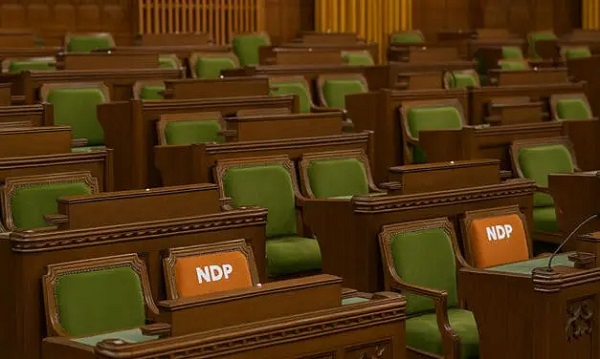
This article supplied by Troy Media.
 By Michael Taube
By Michael Taube
Official party status requires 12 seats. The NDP got seven. End of story
Rules are rules.
That, in a nutshell, is why the NDP wasn’t granted official party status in the House of Commons on Monday. Prime Minister Mark Carney and the
Liberals, to their credit, made the right decision.
Let’s examine why.
The 1963 Senate and House of Commons Act passed an amendment that gave an annual allowance to party leaders other than the prime minister and
leader of the Opposition. In doing so, the Canadian government had to establish what constitutes a “political party.” The definition they came up with was a sensible one: it had to have a “recognized membership of 12 or more persons in the House of Commons.”
This important amendment is still used today.
The NDP fell from 24 to a paltry seven seats in last month’s federal election. (There are a total of 343 seats in the House of Commons.) They finished with 1,234,673 votes, or 6.29 per cent, which was behind the Liberals, Conservatives and Bloc Québécois. Party leader Jagmeet Singh, who had represented the former Burnaby South riding since 2019, finished a distant third in the newly created Burnaby Central riding and resigned.
The NDP’s seven seats is well below the 12-seat requirement needed for official party status. This means Canada’s socialist alternative won’t be able to ask questions in the House of Commons and will lose out on money for research purposes.
Or, to put it another way, they’re plumb out of luck.
Hold on, some people said. They pointed out that the NDP’s seat count and popular vote only plummeted because many progressive voters backed Carney and the Liberals as the best option to counter U.S. President Donald Trump and his tariffs. They felt that the NDP’s long history as a champion for unions and the working class should count for something. They suggested there should be an exception to the rule.
Guess what? They’re wrong.
This is the worst election result in the party’s history. Even its predecessor, the Co-operative Commonwealth Federation (CCF), did marginally better in its first campaign. The CCF won seven out of 245 seats—and earned 410,125 votes, or 9.31 per cent—in the 1935 election. Party leader J.S. Woodsworth, who had represented the riding of Winnipeg North Centre as an Independent Labour MP since 1925, comfortably held his seat.
Meanwhile, this won’t be the first time they’ve ever lost official party status.
The NDP dropped from 43 to nine seats in the 1993 election. It was a dismal showing, to say the least. There was a suggestion at the time that then-party leader Audrey McLaughlin, the first woman to lead a party with political representation in Canada’s House of Commons, deserved a better fate. While the NDP certainly came closer to achieving the 12-seat requirement in this particular election, Prime Minister Jean Chrétien and the Liberals decided against granting them official party status.
Why? As I mentioned earlier, rules are rules.
Then again, British pilot Harry Day notably told his fellow flying ace Douglas Bader in 1931, “You know my views about some regulations—they’re written for the obedience of fools and the guidance of wise men.”
Does this mean that individuals and organizations who follow rules are, in fact, fools? Not at all. While certain rules in a liberal democratic society can range from slightly questionable to utterly ridiculous, they’re usually put in place for a specific purpose.
In the case of the House of Commons, it’s to ensure that a bar has been set with respect to political representation. Is 12 seats the right number? That’s difficult to say. It certainly prevents small protest parties and one-issue parties that unexpectedly win a tiny number of seats in an election from acquiring power and status right off the bat. They need to win more seats and grow in size and stature to reach a point of respectability. Most of them never reach this point and disappear while others float in a constant state of mediocrity like the Green Party of Canada. ’Tis the nature of the political beast.
One final point. If Singh and the NDP had reached double digits in total number of seats in 2025, a solid case could have been made in favour of official party status. If they had finished with 11 seats, it would have almost been a lock. Neither scenario ultimately materialized, which is why Carney and the Liberals did exactly what they did.
Michael Taube is a political commentator, Troy Media syndicated columnist and former speechwriter for Prime Minister Stephen Harper. He holds a master’s degree in comparative politics from the London School of Economics, lending academic rigour to his political insights.
Troy Media empowers Canadian community news outlets by providing independent, insightful analysis and commentary. Our mission is to support local media in helping Canadians stay informed and engaged by delivering reliable content that strengthens community connections and deepens understanding across the country.
2025 Federal Election
Judicial recounts give Conservatives 2 more seats, keeping Liberals short of majority
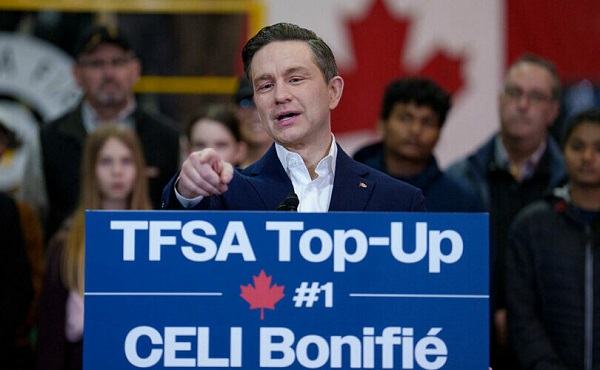
From LifeSiteNews
After a judicial recount, Conservative candidate Kathy Borrelli has officially won over Liberal incumbent Irek Kusmierczyk, in the Ontario riding of Windsor-Tecumseh-Lakeshore.
Judicial recounts from the 2025 federal election have given the Conservative Party two new seats, with one candidate winning by just four votes.
After a judicial recount, Conservative candidate Kathy Borrelli has officially won over Liberal incumbent Irek Kusmierczyk, in the Ontario riding of Windsor-Tecumseh-Lakeshore.
Borrelli got 32,090 votes, with Kusmierczyk getting 32,086 votes, and NDP candidate Alex Ilijoski getting 4,240 votes.
In the Newfoundland riding of Terra Nova-The Peninsulas, Conservative candidate Jonathan Rowe beat out Liberal Anthony Germain by just 12 votes after a recount with the initial result showing a Liberal victory.
The new election results mean the Conservatives now have 144 seats with the Liberals at 169, three short of a majority.
Judicial recounts are automatically triggered when the margin of victory for a candidate is less than 0.1 percent of valid votes.
While these recounts have favored the Conservatives, others have gone in the Liberal Party’s favor.
A May 16 judicial recount switched the southern Ontario riding of Milton East-Halton Hills South to the Liberals with a 21-vote victory over the Conservatives.
Overall, the election results have been a big blow to the Conservative Party, which on top of losing the election also saw its leader, Pierre Poilievre, fail to win his long-held seat. However, Poilievre is expected to run in a yet-to-be-announced by-election in Alberta to reclaim a seat in Parliament.
-

 International1 day ago
International1 day agoIsrael’s Decapitation Strike on Iran Reverberates Across Global Flashpoints
-

 Business2 days ago
Business2 days agoTrump: ‘Changes are coming’ to aggressive immigration policy after business complaints
-
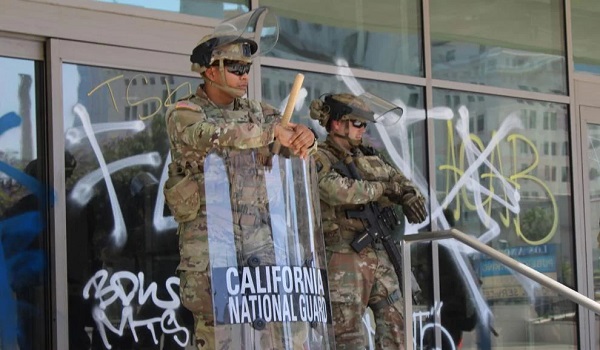
 illegal immigration2 days ago
illegal immigration2 days agoLA protests continue as judge pulls back CA National Guard ahead of ‘No Kings Day’
-

 conflict2 days ago
conflict2 days agoIsrael strikes Iran, targeting nuclear sites; U.S. not involved in attack
-

 Alberta1 day ago
Alberta1 day agoPunishing Alberta Oil Production: The Divisive Effect of Policies For Carney’s “Decarbonized Oil”
-
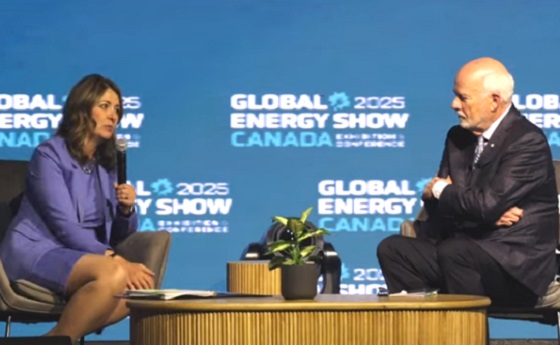
 Alberta1 day ago
Alberta1 day agoAlberta Premier Danielle Smith Discusses Moving Energy Forward at the Global Energy Show in Calgary
-

 Energy1 day ago
Energy1 day agoCanada is no energy superpower
-

 Fraser Institute1 day ago
Fraser Institute1 day agoLong waits for health care hit Canadians in their pocketbooks


